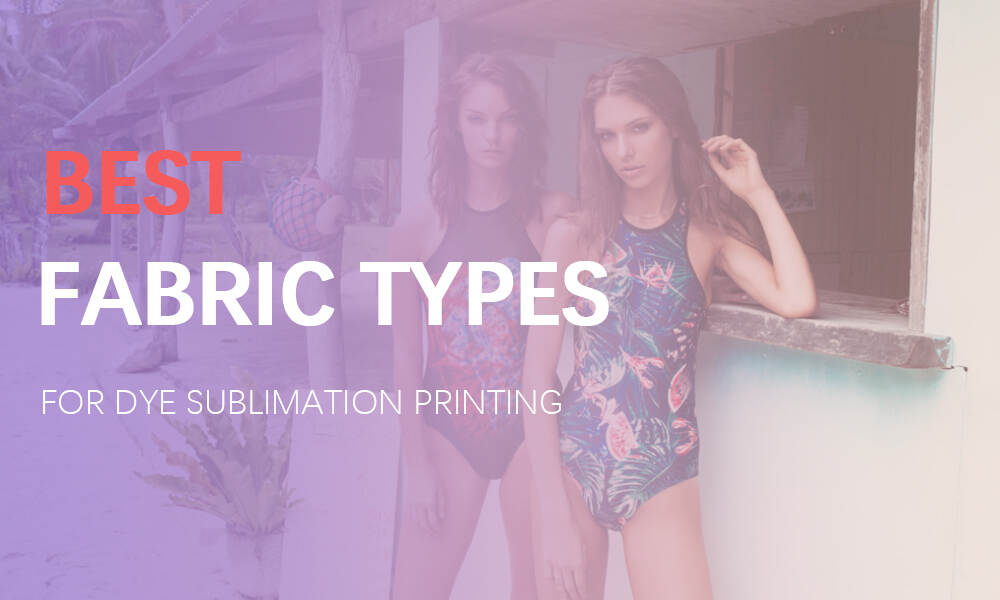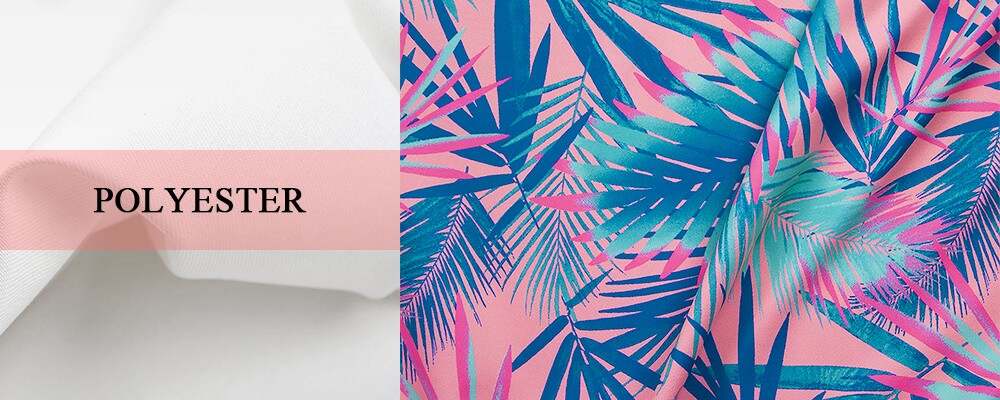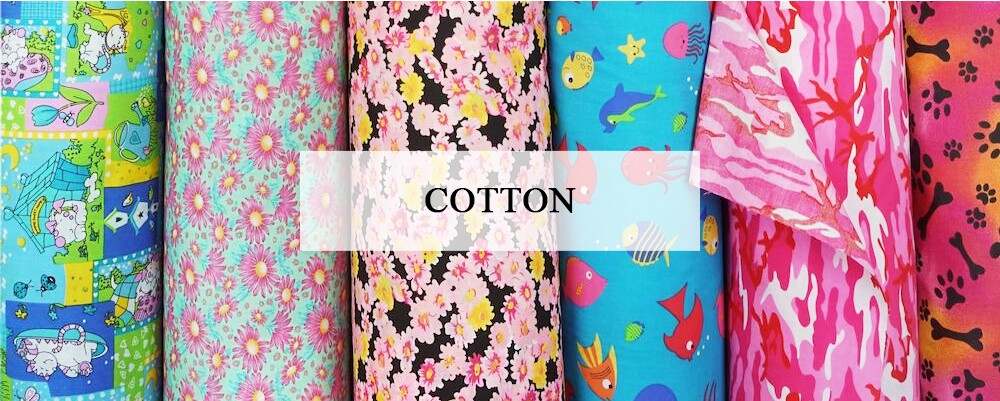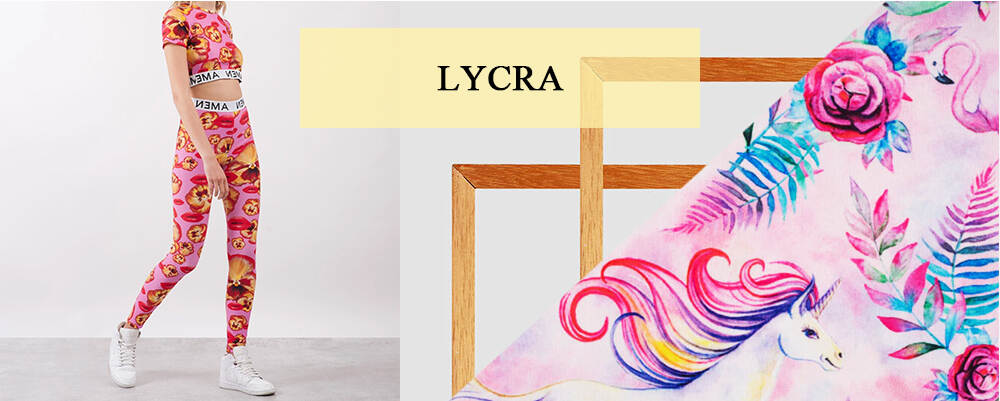
The dye sublimation printing technique took the printing and fashion industry by storm due to its ability to produce high-quality vibrant prints. The whole process might be a bit difficult, but the end is always rewarding. To guarantee success with dye-sublimation printing, you need to first carve a niche in the industry for yourself and produce the best products for it.
As a business owner specializing in dye sublimation, the type of fabric you decide to use will ultimately define your success. And that is not what you want to play with. In this article, we are going to talk about the various types of fabrics, their pros and cons, and how they can impact your success rate.

So, before we delve deeper into the topic of the day, we want to clarify some basic principles of dye sublimation. Sublimation printing is the process of transferring dye from one sheet onto a fabric. Unlike other printing methods, dye sublimation can transfer dyes to every part of the garment. That is, the dye is not just applied topically but also fuses with the fiber molecules of the fabric.
Another thing to note is that the dye-sublimation printing technique is best suited for man-made fabrics. This is because the dye used in sublimation printing is water-based, which then turns into gas under high heat and pressure to enable it to penetrate and fuse with the molecules of the fabric. And man-made fabrics can withstand the process.

Now that we have the basics out of the way, let us take a closer look at each fabric and how well they work with dye sublimation printing.
Polyester Fabric – A Match Made in Heaven for Dye Sublimation Printing
We mentioned earlier that man-made fabrics are the best for dye-sublimation printing. One great example of man-made fabrics is polyester and poly-blends. The dyes found in sublimation ink penetrate and bond easily with the polyester fiber molecules. What you get is an amazing, vibrant finished design of the highest quality.
To get the highest image quality after transferring your design, you need to use 100% polyester. However, using 100% polyester has some downsides. One thing is for sure is that pure polyester fabric is quite uncomfortable. Many people don’t like it because it is not breathable and can’t withstand several launderings because its fibers are smaller and, as such, can easily loosen. All this contributes to why people in the dye-sublimation printing business use polyblend.
Talking about polyblends, you may ask, what are they? Polyblends are fabrics that are not 100% polyester. That is they are a mixture of polyester and other fibers. Many people prefer them as they don’t come with all the problems of pure polyester fabrics. They can withstand washing and don’t come undone easily. However, they have their own issues too. You may experience uneven transfers or even light transfers. This is because the dye sublimation ink usually bonds to the polyester molecule, leaving the other fibers.
As such, you have to keep in mind that, the lower the polyester percentage in the blend, the lower the quality of your transfer. The best percentage for polyblends is anything higher than 40%. But remember, if your business reputation is on the line, it is better to use higher percentage poly blends like 80%.
Pros
· high-quality transfer
· vibrant and bright design.
· The dye bonds easily.

Cotton—Certainly Not the Best Choice, but It Will Work
Since the advent of the dye-sublimation printing process, it has been established time and time again that it doesn’t work well with cotton. That is because the sublimation dye bonds the polymer molecules, while it only stays on the surface of cotton as it can’t penetrate the fibers. However, as the dye-sublimation printing technology is constantly evolving, some products can be used to apply the dye to the surface of the cotton fabric. But because the dye did not bond with molecules as they do in standard sublimation, the image may not be as vibrant.
Not only that, but the dye is also most likely to wash off quickly, peel, and crack when washed. However, when you consider that traditional forms of printing cotton also end up fading and peeling, you might want to risk it. But in business, you always want to produce top-quality products, and as such, you should stay away from cotton. Unless a customer specifically requested it.
With that said, there are some methods you can use to improve the bonding process between the cotton and dye. It is of two types—specialized coating and using transfer paper. The specialized coating helps to bridge the molecules, allowing the dye to penetrate. But the image may still not be as bright and vibrant as when you use man-made fabrics. The transfer paper, on the other hand, allows you to print on it and transfer the design to your cotton fabric surface using heat.
Pros
· The finished product is soft.
· The material is breathable.

How about Spandex, Nylon, and Lycra?
If you decide to use any one of the fabrics above, you are not alone. Most people in the dye sublimation industry also use them. Because, if you remember, at the beginning of this article we said, as long as the fabric is man-made, then it can be sublimated. However, there are many things you need to consider before opting for any one of these fabrics.
First, always make sure to confirm the percentage amount of polyester in the fabric. because that will determine how your finished product looks in terms of quality. Go for the one with a higher percentage. The second thing to consider is to make sure that they can withstand the high temperature required for dye-sublimation transfer. This is because these materials have low burning temperatures and can burn easily, causing you losses rather than profits.
When the fabric gets burnt, it may shrink, thereby distorting the final image design. All in all, it reduces the breathability function of the fabric, making it unpleasant to wear. The easiest way to confirm all this is to check with your fabric supplier or manufacturer. As they will have an idea of the ideal temperature for printing the fabric.sure you test your fabric first, both for printing and temperature and pressure tests. Always double-check, it won’t harm you to do so.
Pros
· More fabric options
· More breathable than pure polyester.

In conclusion, as you can see, there are many fabric options for your dye sublimation printing business. However, always have it in the back of your mind that the less natural, the better. Man-made is the best, and you can never go wrong with 100% polyester. But pure polyester comes with many issues that include a lack of breathability, making it uncomfortable to wear. And although cotton can still be printed with a dye sublimation technique, it is not the most suitable material. But if your customer requests it, let them know the type of quality they will be getting beforehand to prevent any problems.
Also, remember that at least a 60% polyester fabric will do the work, but your transfer image won’t be as bright as a 100% or a higher percentage of polyester. If you are using other materials, always test a small portion first. This will save you lots of unwanted headaches in the future.




